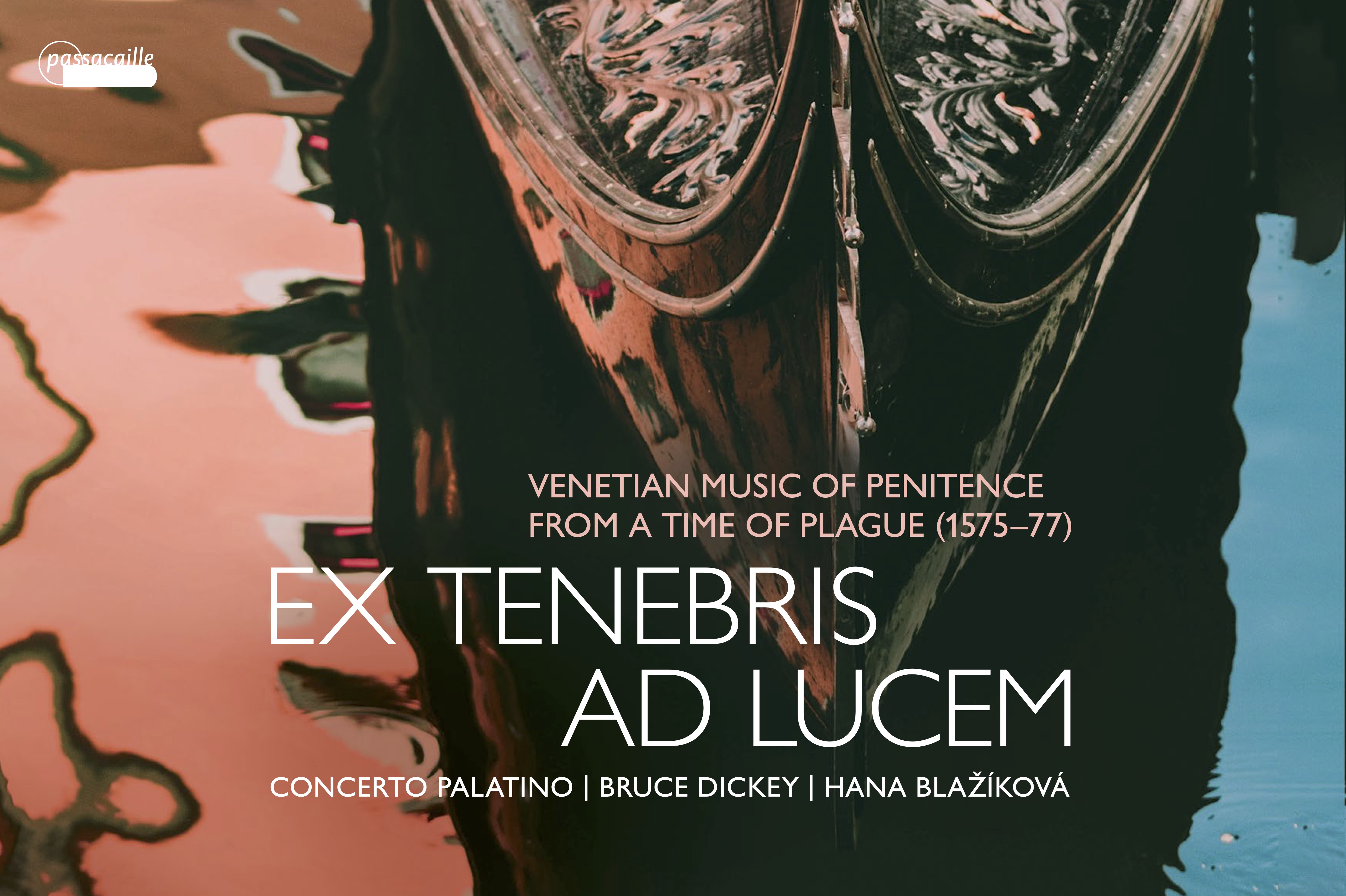 Ex tenebris ad lucem: Venetian Penitential Music from a Time of Plague, 1575–77
Ex tenebris ad lucem: Venetian Penitential Music from a Time of Plague, 1575–77
Concerto Palatino, dir. Bruce Dickey
Passacaille PAS 1135 (2023)
I bet a lot of us who run early-music ensembles have lately had at least a fleeting idea about a show or a recording devoted to music for plague. I doubt that anyone has done it better than Bruce Dickey and Concerto Palatino.
The plague in question was in Venice between 1575 and 1577, killing, as Dickey explains in lucid and absorbing liner notes, somewhere between a quarter and a third of the city’s population. It inspired a considerable religious upheaval, including the construction of Palladio’s Church of the Redeemer, Il Redentore, and, one presumes, performances of a good deal of sacred music in an effort to ward off the pestilence and, later, to say thanks for their deliverance.
As so often, it’s hard to attach any particular compositions securely to particular events, but Concerto Palatino come up with a couple of plausible possibilities for ceremonies surrounding the building of Il Redentore, and then they work their way, among appropriate contemporary Venetian church music, from the penitential to the jubilant. The repertory is naturally dominated by Andrea Gabrieli, then the chapelmaster at St. Mark’s, with other works by Giovanni Gabrieli, Giovanni Croce, and Giovanni Battista Grillo.
For this recording, Concerto Palatino consists of six singers (SSATTB), violin, cornett, three trombones, bass trombone, violone, and organ, disposed in various ways. One work is done with voices alone, one with voices plus organ and violone, one by instruments only; the rest are different combinations—there is a lot more variety of sound than the program might seem to promise. And if you know any of their other recordings, you know that it’s just glorious: the playing and singing show a near-ideal combination of power and restraint, of good taste and daring, and the depth and balance of sound are as good as early music gets. The high point for me—not, I confess, much of an Andrea Gabrieli fan before this—was his Deus, Deus meus, respice in me, in ten voices, not polychoral, with the bottom voice (contrabass clef in the original) descending regularly to low C and the bass sackbut doing what the bass sackbut does best. You could take a bath in that sound.
And in the middle of all this is a new composition, commissioned from Robert Kyr, called Vigil: From Darkness into Light. It’s twelve minutes long, and I am completely besotted with it. Kyr alternates chorus sections, on psalm texts in Latin and done by the large ensemble, and solo sections, in English and done by the soprano Hana Blažíková with cornett, violin, organ, and violone. At first they are two different universes, with the choruses sticking close to the style, sometimes the actual notes, of the psalms that we hear elsewhere on the recording, and the solo group in a plaintive modern style; and then they start moving closer together, and (like the rest of the disk) from penitential toward jubilant texts for a truly goosebump-inducing finish. Do I gush? Do I over-explain? Well, listen to it yourself: if you can hear it unmoved, I’m sorry.
Ex tenebris ad lucem: from darkness into light. Venice eventually got there in the 1570s, and mercifully, so have we in the 2020s—at least so far. This CD is as good a celebration as I can imagine.
Kenneth Kreitner
University of Memphis



